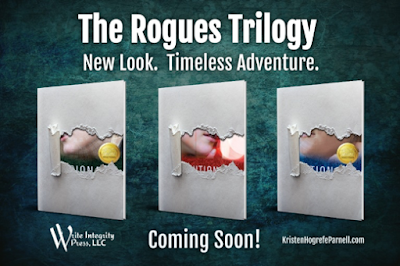3 Media Tools for Writers Working Smarter, Not Harder

By Kristen Hogrefe Parnell @khogrefeparnell
We know that the writing life isn’t just about writing. Regardless of the publishing route we choose, we writers are largely responsible for marketing and sharing our books with others.
Most of you aren’t graphic designers or degree-holding marketers, and neither am I. Today, I want to share three tools that can help you work smarter, not harder—so you have more time to do what you love: writing.
#1: Canva
I’m starting with Canva because I use this platform most. In fact, I use it so much that I actually pay for the business plan. However, the free version offers the basic features most people need, so you certainly don’t have to upgrade.
In a nutshell, Canva is graphic design for dummies (and I include myself in that category). Canva offers pre-designed templates for almost any social media platform. Need an Instagram post? No problem! Want to design a Facebook page banner? Canva has you covered.
With countless free photos, pre-designed templates, customized text, and easy personalization, Canva makes you feel like a professional without a graphics degree. If you want to see some examples in action, I design almost all my blog covers in Canva. I also created the banners on my Facebook or Twitter sites using Canva.
To get started, visit canva.com.
#2: Book Brush
At first, I thought Book Brush was just Canva’s second cousin, but the more I use Book Brush, the more I appreciate the unique benefits it offers writers. While it has many of the same features as Canva (though I feel Canva is simpler for basic design needs), Book Brush has some flashy features Canva doesn’t have, including Community Templates that let you search by Genre, Platform, Description, or 3D images. To use these templates, you simply upload your book cover and insert it into the staged book or eBook cover in the pre-made design.
My favorite feature that sets Book Brush apart is Instant Mockups. This feature lets you take your one-dimensional cover and add it to 3D templates. Book Brush even has “cover reveal” templates, which helped me create this graphic.

With the limited plan, you receive fifteen free downloads before you have to upgrade. You can also access select Instant Mockups for free as well.
To get started, visit bookbrush.com.
#3: Lumen5
Lumen5 is an online video maker that lets you easily build videos with its drag-and-drop feature. With a simple click and drag, you can add free creative commons images, apply text, and even add free audio tracks to your slides. Using the free version, I’ve used Lumen5 to create simple but crisp book trailers, and you can view an example for my novel The Revisionary.
As with most free programs, there are also upgrade options, but depending on your needs, the free versions are usually a perfect place to begin.
To get started, visit lumen5.com.
Those are three of my top media tools that I use as a writer. As a disclaimer, I’m not sharing about them to get a kick-back, but because I think they might be helpful to you too. Do you have any other favorite tools? Please mention them in the comments.
TWEETABLE3 Media Tools for Writers Working Smarter, Not Harder - @KHogrefeParnell on @EdieMelson (Click to Tweet) Kristen Hogrefe Parnell writes novels, learns something new every day, and runs for pizza. An educator and mentor, she teaches English online and is an inspirational speaker for schools, churches, and podcasts. Her young adult dystopian novels, The Revisionary and The Reactionary, both won the Selah for speculative fiction, and she recently signed with Mountain Brook Ink for a new romantic suspense series, coming December 2022. Kristen and her husband live in Florida and enjoy sharing their lake home with family and friends. She blogs at KristenHogrefeParnell.com where she challenges readers to find faith in life’s everyday adventures.
Kristen Hogrefe Parnell writes novels, learns something new every day, and runs for pizza. An educator and mentor, she teaches English online and is an inspirational speaker for schools, churches, and podcasts. Her young adult dystopian novels, The Revisionary and The Reactionary, both won the Selah for speculative fiction, and she recently signed with Mountain Brook Ink for a new romantic suspense series, coming December 2022. Kristen and her husband live in Florida and enjoy sharing their lake home with family and friends. She blogs at KristenHogrefeParnell.com where she challenges readers to find faith in life’s everyday adventures.



